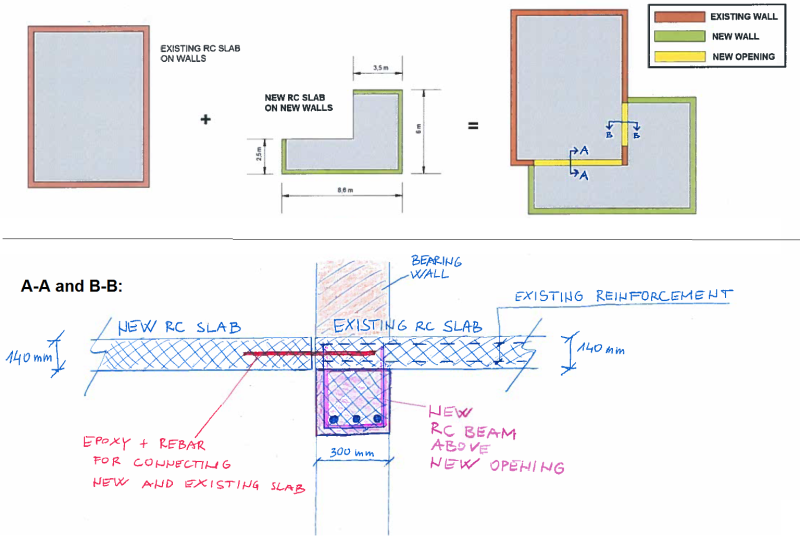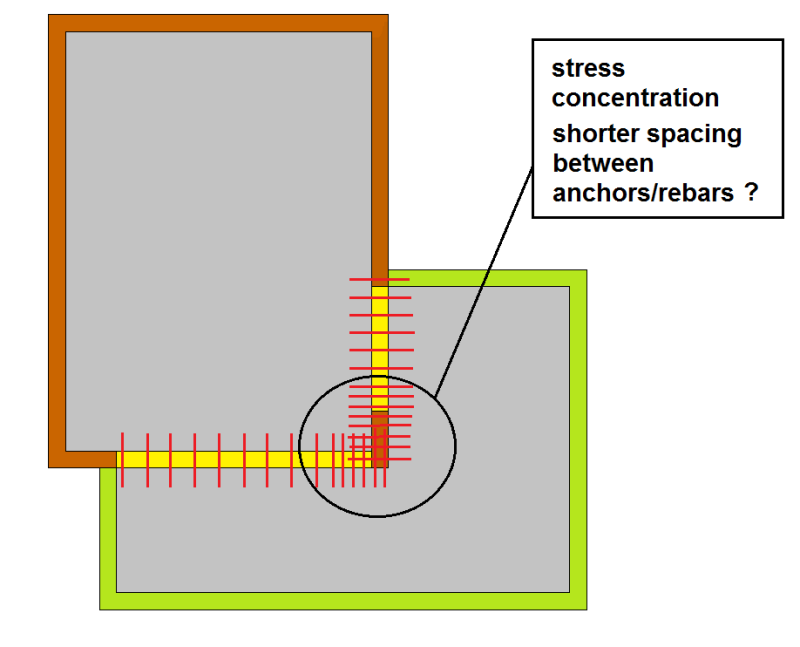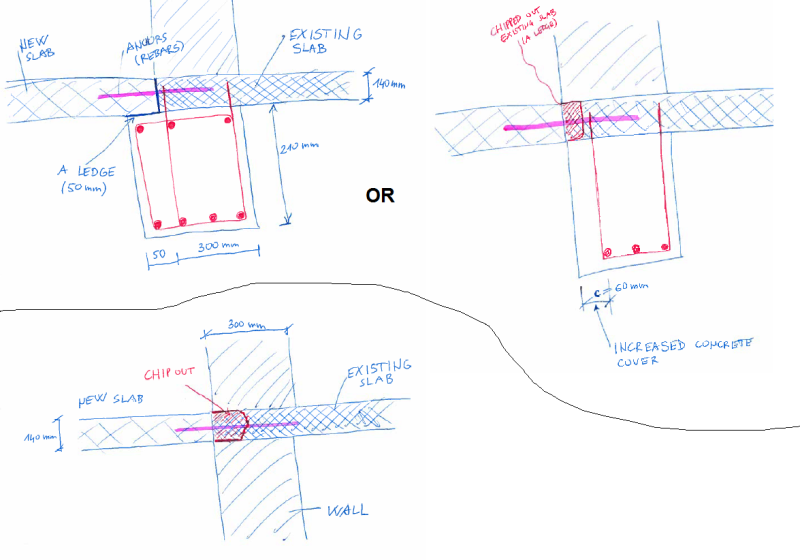gmd255
Structural
- Apr 17, 2017
- 49
I dont have much experience with reconstructions so I hope my questions wont be silly. Id really like to know what do you guys usually do/suggest in situations like this.
I have to connect a new RC slab (140 mm thick) to existing RC slab (same thickness). There will also be some new openings (span 3 and 5 m) in existing masonry walls. Because of this I will design RC BEAMS where existign walls used to be.
I will connect RC beam/slab to an existing slab like this: drilling holes in existing slab, then epoxy + rebars.
What Im wondering is how to make sure that new stirrups has sufficient anchoring since existing slab is only 140 mm thick. Do you guys design stirrups by considering a shear flow between existing slab and new beam?
About connecting slabs together - I was thinking about doing it in the middle of a slab since slabs are 140 mm thick, but I d feel better if I could connect it top/bottom.
Is it ok that all shear gets transferred by relying on the reinforcing bars only? I would normally chip a bit into the existing slab so that a part of the shear gets transferred with bearing on it which means it isnt 100% relying on the rebars, but since im also adding a RC beam below a slab it can be problematic...
I will appreciate any suggestion, advice, photo or sketch.
Tnx in advance.


I have to connect a new RC slab (140 mm thick) to existing RC slab (same thickness). There will also be some new openings (span 3 and 5 m) in existing masonry walls. Because of this I will design RC BEAMS where existign walls used to be.
I will connect RC beam/slab to an existing slab like this: drilling holes in existing slab, then epoxy + rebars.
What Im wondering is how to make sure that new stirrups has sufficient anchoring since existing slab is only 140 mm thick. Do you guys design stirrups by considering a shear flow between existing slab and new beam?
About connecting slabs together - I was thinking about doing it in the middle of a slab since slabs are 140 mm thick, but I d feel better if I could connect it top/bottom.
Is it ok that all shear gets transferred by relying on the reinforcing bars only? I would normally chip a bit into the existing slab so that a part of the shear gets transferred with bearing on it which means it isnt 100% relying on the rebars, but since im also adding a RC beam below a slab it can be problematic...
I will appreciate any suggestion, advice, photo or sketch.
Tnx in advance.




![[idea] [idea] [idea]](/data/assets/smilies/idea.gif)
![[r2d2] [r2d2] [r2d2]](/data/assets/smilies/r2d2.gif)
